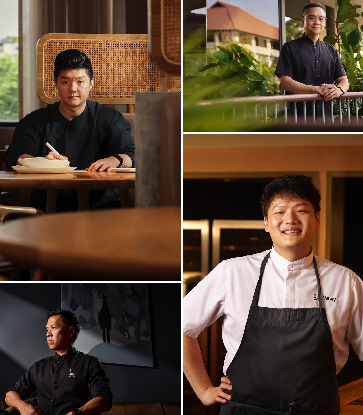
Sit is a tea sommelier and Fook Ming Tong’s general manager. She began learning about Chinese tea as a teenager, and her qualification in tea connoisseurship has been recognised by the government of Mainland China. At the moment, she dedicates her time scouring tea plantations around China to source the best teas for her customers.
Dear Ann,
How do I develop a better appreciation for pu'er tea? What’s the distinguishing characteristic of pu’er?
In fermentation, the stimuli in tea leaves like chlorophyll are decomposed. Pu’er is usually dark brown in colour. It tastes mild and smooth. Thanks to the long fermentation period, there’s also a deep fragrance to the tea.
How many types of pu’er are there?
Pu’er can be roughly divided into loose tea leaves and tea cake. After fermentation, tea cakes can be made using steam and machinery to flatten. Without shaping, it would be sold as loose leaves.
Some pu’er teas can be fermented longer than others. The dry room method puts leaves in an airy space for natural fermentation. Alternatively, some tea makers would ferment the tea manually by placing it in a room with high temperature and humidity. This step is called piling. The wet room method has the tea in a humidity-controlled space to speed up fermentation.
Loose leaves or tea cake can be further categorised into many more varieties. For example, raw (sheng) or green pu’er have a shorter post-fermenting period and would display a light green colour after brewing. As for tea cakes, there are many shapes available. Tea bricks are pressed into rectangular blocks, while tuo cha carries the form of mushroom caps.

Which variety is the most suitable for new tea drinkers?
Loose leaves are more suitable. Generally speaking, tea cakes are made to preserve the tea’s quality, let its mellow fragrance develop and the enzyme oxidise. Tea makers tend to make tea cakes with premium tea leaves. Some use leaves from trees with centuries of history, or leaves grown from better soil and climate. For this reason, tea cakes are more expensive. The purchasing of tea cakes also requires advanced knowledge, such as the tree’s age, origin, the area in which the tea leaves are stored. Such knowledge might not be understood easily by average consumers. On the contrary, loose leaves are less complicated and more affordable. A tea cake costs at least $300. Some are even priced at several thousand dollars.
Where should we buy loose leaves?
The ideal option is well-known tea shops. Pu’er tea is made from a complicated process with many procedures. Situations like bad humidity control in the fermentation room could damage the quality of the tea. Besides that, average tea drinkers might have problems identifying the quality of teas. Factors like the degree of pesticides used, whether the tea is made from piling (manual fermentation), the hygienic and storage conditions are hard to tell.
Furthermore, post-fermentation of pu’er involves complex reactions of microorganisms, if done poorly, it would not only affect the taste of the product, but also cause damage to health. Famous tea shops usually pay closer attention to the teas they buy to maintain their reputation.
What to look out for when buying loose leaves?



















